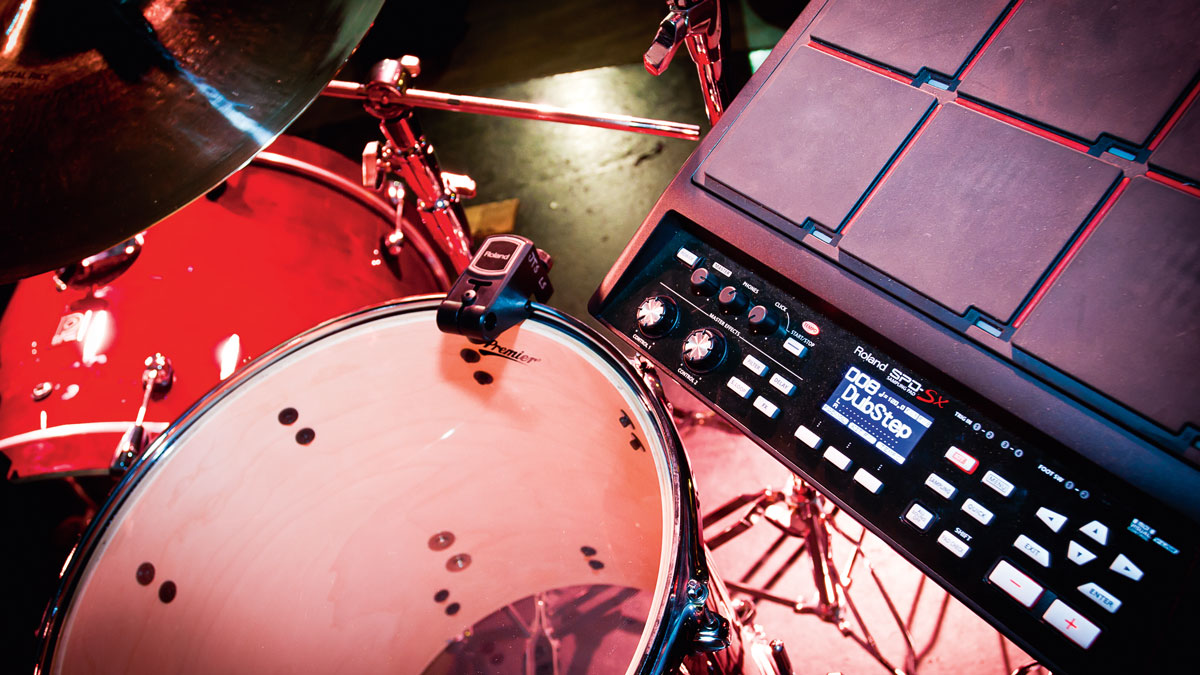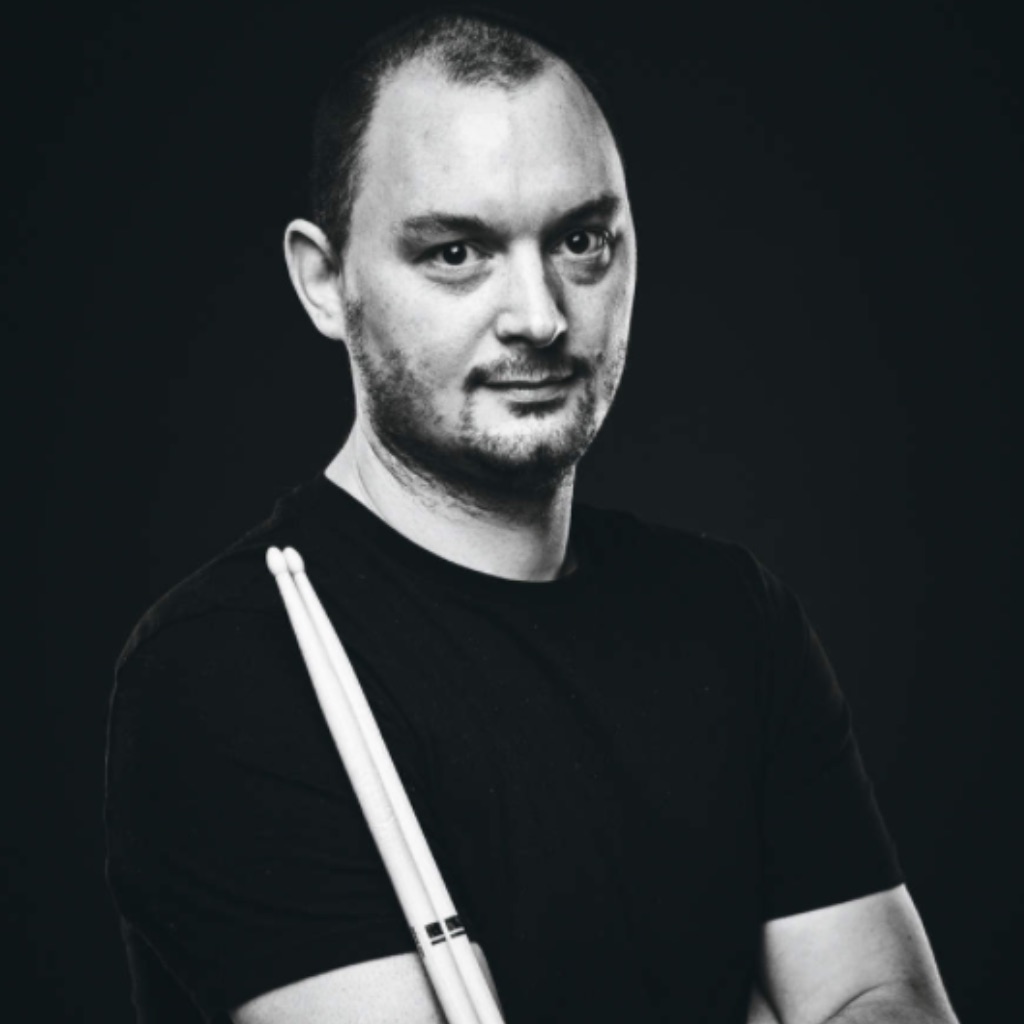Going hybrid part 2: get up and running with your electro-acoustic drum kit
All you need to know when adding electronics to your kit

Adding your sounds
If you’re just getting started with electronics, it can sound like a confusing and potentially expensive investment, but in actual fact, adding a couple of electronic sources to your drum kit is very easy.
So, following on from our gear primer last week, next we'll be thinking about how to actually use the kit in the most effective way possible.
There are plenty of products already available aimed at doing exactly that, and if you have an electronic kit, you might already own everything you need to get the job done! The basic principles of using pads and triggers is the same, regardless of how straightforward or complex your set-up is, but for a start, we’ll look at how to put together a simple two-sound hybrid set-up.
Think about your sounds
The first thing to decide is why and what you need to trigger. For example, if you’re playing in a function band, chances are that you’re covering a lot of songs that will require layered snare/handclaps, electronic bass drums or effect-type sounds.
These types of sounds are found in pretty much every drum module, and the good news is that your triggers or pads can be reassigned for every song, taking you from cowbell to 808 in an instant!
…and how you want to play them
Once you know the types of sound you’re looking to create, you’ll need to decide how to trigger them. For example, if you’re layering a sound to occur alongside every hit of your acoustic snare, an acoustic drum trigger will be much more efficient.
However, if you want to use sounds that occur independently from your acoustic kit, a separate pad is likely to be a better option. Roland’s BT-1 Bar Trigger represents a great halfway house, in that it can be mounted to the rim of your drum and played alongside or independently of your acoustic sounds.
All about the bass (drum)
The most common way of triggering a bass drum is to use an acoustic trigger attached to the rim of your kick. As we only have one fundamental sound source on our bass drums (the beater against the head) bass drum triggers are single-zone.
The acoustic trigger can then be used to generate an additional sound to your acoustic kit, or replace it entirely.
A good example of this is metal drummers who require consistency in order for fast double- pedal playing - which can often get lost in a mix due to room acoustics/tuning/mic placement - to cut through.
The sound from the module is sent to the PA, and will punch its way through a wall of loud guitars and bass.
The placement
With a small hybrid set-up, placement is key. By now, you’ll have an idea of what sounds you’ll be making, and the method of triggering them, so think about the grooves you’re playing, where the triggered sounds need to occur within the part and place your pad(s) accordingly.
This will most likely be governed by your current kit placement, and the nature of the sounds. Just like any part of your kit, you’ll want to be able to reach it quickly and comfortably, without accidentally triggering your sounds when you don’t want to.
Putting it all together
Using electronics may sound complicated, but in the case of a basic set-up, it’s as simple (or simpler) than your guitar player’s pedal board. Your triggers or pads come with the cables you need to connect them to your module, which is then sent (usually via jack cables) to your PA system either in mono or stereo.
In this instance, we aren’t running a click track that we need to keep away from the audience’s ears, so you can send the signal back to your standard stage monitor, or if you’re playing smaller, quieter gigs, rely on the main PA speakers to hear the sounds you’re triggering.
The intermediate hybrid set-up
Once you’ve got to grips with the hybrid concept, you’ll start to see more and more opportunities to integrate electronics into your kit.
In this set-up, we’ll be looking at using more pads, and how you can start using your own custom sounds to add even more sonic colour to your live set.
Check your brain
Chances are, your module is capable of accepting more than two trigger inputs at once, even if it only has two inputs. For example, modules like the Roland TM-2 or Alesis SamplePad (and many others) have two inputs, but they’re dual-zone.
This means that for each input, the module assigns a potential of two sounds, so you can have up to four single sound-sources at your disposal. This is done by using a stereo-mono ‘Y’ cable to split the trigger input in half.
The Y cable plugs into the stereo trigger input on the module, then divides into two mono jacks for you to plug your pads or triggers into. Do this twice, and you now have four assignable inputs!
Start listening
In order to take your hybrid sounds further, it’s important to start listening actively to the sounds you want to recreate. This isn’t too difficult, as you’ll soon start noticing similarities and trends.
Familiarise yourself with classic electronic sounds and textures and try to train your ear to identify the differences between sounds. Is it a handclap or a crunchy finger snap? A TR-808 or a LinnDrum?
It’ll make selecting and processing the sounds within your module quicker and easier if you’re starting with the correct source.
Then start editing
At the very least, your module will include the ability to change the pitch and tonality of your sound, but many modules include more fully-functioning effects processors to help manipulate your sounds.
Reference the sound you’re trying to emulate while you edit in your module. Adjusting the pitch, applying filtering or distortion and other effects can help get you closer even with a fairly limited set of sounds.
Or make your own!
Many modules and multi-pads from the likes of Roland allow you to import your own custom samples as .wav files, and trigger them in exactly the same way as the internal sounds in your module.
Find a sound
There are lots of commercially available, royalty-free samples available from sites such as timespace.com and loopmasters.com. There are also many free resources available including our own MusicRadar-hosted collections: bit.ly/sampleradar

Stuart has been working for guitar publications since 2008, beginning his career as Reviews Editor for Total Guitar before becoming Editor for six years. During this time, he and the team brought the magazine into the modern age with digital editions, a Youtube channel and the Apple chart-bothering Total Guitar Podcast. Stuart has also served as a freelance writer for Guitar World, Guitarist and MusicRadar reviewing hundreds of products spanning everything from acoustic guitars to valve amps, modelers and plugins. When not spouting his opinions on the best new gear, Stuart has been reminded on many occasions that the 'never meet your heroes' rule is entirely wrong, clocking-up interviews with the likes of Eddie Van Halen, Foo Fighters, Green Day and many, many more.
